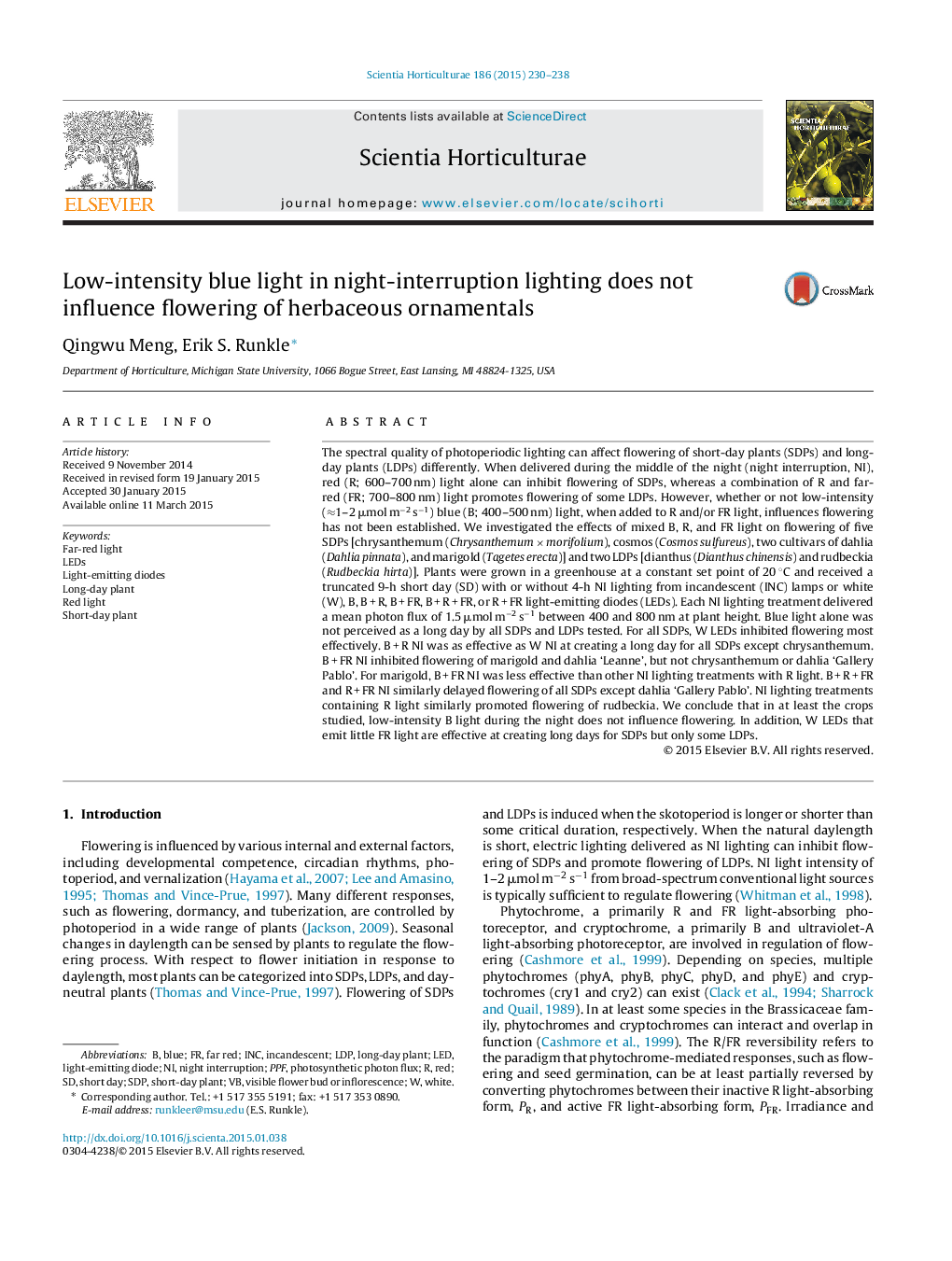| کد مقاله | کد نشریه | سال انتشار | مقاله انگلیسی | نسخه تمام متن |
|---|---|---|---|---|
| 4566428 | 1628812 | 2015 | 9 صفحه PDF | دانلود رایگان |
• We evaluated various low-intensity night-interruption light quality treatments to control flowering of photoperiodic crops.
• Blue light alone or when added to red and far-red light did not influence flowering.
• White light created long days for short-day plants but only for some long-day plants.
• The estimated phytochrome photoequilibrium of lighting treatments was not an effective indicator of flowering regulation.
The spectral quality of photoperiodic lighting can affect flowering of short-day plants (SDPs) and long-day plants (LDPs) differently. When delivered during the middle of the night (night interruption, NI), red (R; 600–700 nm) light alone can inhibit flowering of SDPs, whereas a combination of R and far-red (FR; 700–800 nm) light promotes flowering of some LDPs. However, whether or not low-intensity (≈1–2 μmol m−2 s−1) blue (B; 400–500 nm) light, when added to R and/or FR light, influences flowering has not been established. We investigated the effects of mixed B, R, and FR light on flowering of five SDPs [chrysanthemum (Chrysanthemum × morifolium), cosmos (Cosmos sulfureus), two cultivars of dahlia (Dahlia pinnata), and marigold (Tagetes erecta)] and two LDPs [dianthus (Dianthus chinensis) and rudbeckia (Rudbeckia hirta)]. Plants were grown in a greenhouse at a constant set point of 20 °C and received a truncated 9-h short day (SD) with or without 4-h NI lighting from incandescent (INC) lamps or white (W), B, B + R, B + FR, B + R + FR, or R + FR light-emitting diodes (LEDs). Each NI lighting treatment delivered a mean photon flux of 1.5 μmol m−2 s−1 between 400 and 800 nm at plant height. Blue light alone was not perceived as a long day by all SDPs and LDPs tested. For all SDPs, W LEDs inhibited flowering most effectively. B + R NI was as effective as W NI at creating a long day for all SDPs except chrysanthemum. B + FR NI inhibited flowering of marigold and dahlia ‘Leanne’, but not chrysanthemum or dahlia ‘Gallery Pablo’. For marigold, B + FR NI was less effective than other NI lighting treatments with R light. B + R + FR and R + FR NI similarly delayed flowering of all SDPs except dahlia ‘Gallery Pablo’. NI lighting treatments containing R light similarly promoted flowering of rudbeckia. We conclude that in at least the crops studied, low-intensity B light during the night does not influence flowering. In addition, W LEDs that emit little FR light are effective at creating long days for SDPs but only some LDPs.
Journal: Scientia Horticulturae - Volume 186, 21 April 2015, Pages 230–238
